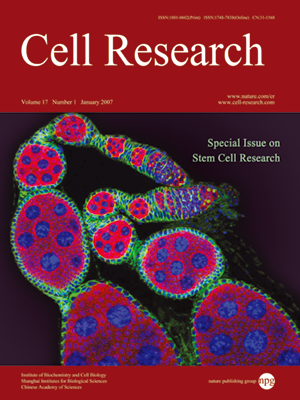
Volume 17, No 1, Jan 2007
ISSN: 1001-0602
EISSN: 1748-7838 2018
impact factor 17.848*
(Clarivate Analytics, 2019)
Volume 17 Issue 1, January 2007: 55-61
REVIEWS
Getting the right stuff: Controlling neural stem cell state and fate in vivo and in vitro with biomaterials
Ana I Teixeira1, Joshua K Duckworth1, Ola Hermanson1
1Center of Excellence in Developmental Biology (CEDB), Organic Bioelectronics (OBOE), Department of Neuroscience, Karolinska
Institutet, SE17177 Stockholm, Sweden
Correspondence: Ana I Teixeira and Ola Hermanson(Ana.Teixeira@cmb.ki.se Ola.Hermanson@ki.se)
Stem cell therapy holds great promises in medical treatment by, e.g., replacing lost cells, re-constitute healthy cell populations and also in the use of stem cells as vehicles for factor and gene delivery. Embryonic stem cells have rightfully attracted a large interest due to their proven capacity of differentiating into any cell type in the embryo in vivo. Tissue-specific stem cells are however already in use in medical practice, and recently the first systematic medical trials involving human neural stem cell (NSC) therapy have been launched. There are yet many obstacles to overcome and procedures to improve. To ensure progress in the medical use of stem cells increased basic knowledge of the molecular mechanisms that govern stem cell characteristics is necessary. Here we provide a review of the literature on NSCs in various aspects of cell therapy, with the main focus on the potential of using biomaterials to control NSC characteristics, differentiation, and delivery. We summarize results from studies on the characteristics of endogenous and transplanted NSCs in rodent models of neurological and cancer diseases, and highlight recent advancements in polymer compatibility and applicability in regulating NSC state and fate. We suggest that the development of specially designed polymers, such as hydrogels, is a crucial issue to improve the outcome of stem cell therapy in the central nervous system.
Cell Research advance online publication 9 January 2007; doi: 10.1038/sj.cr.7310141
FULL TEXT | PDF
Browse 1962


